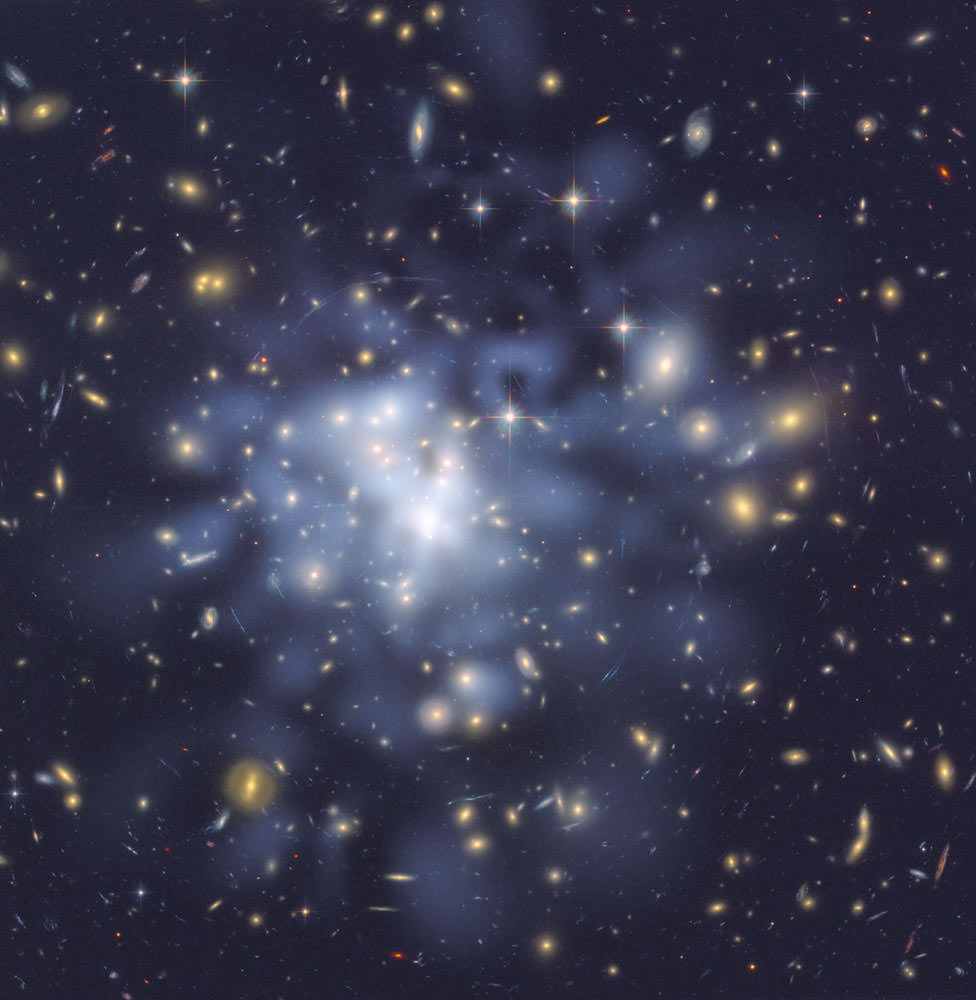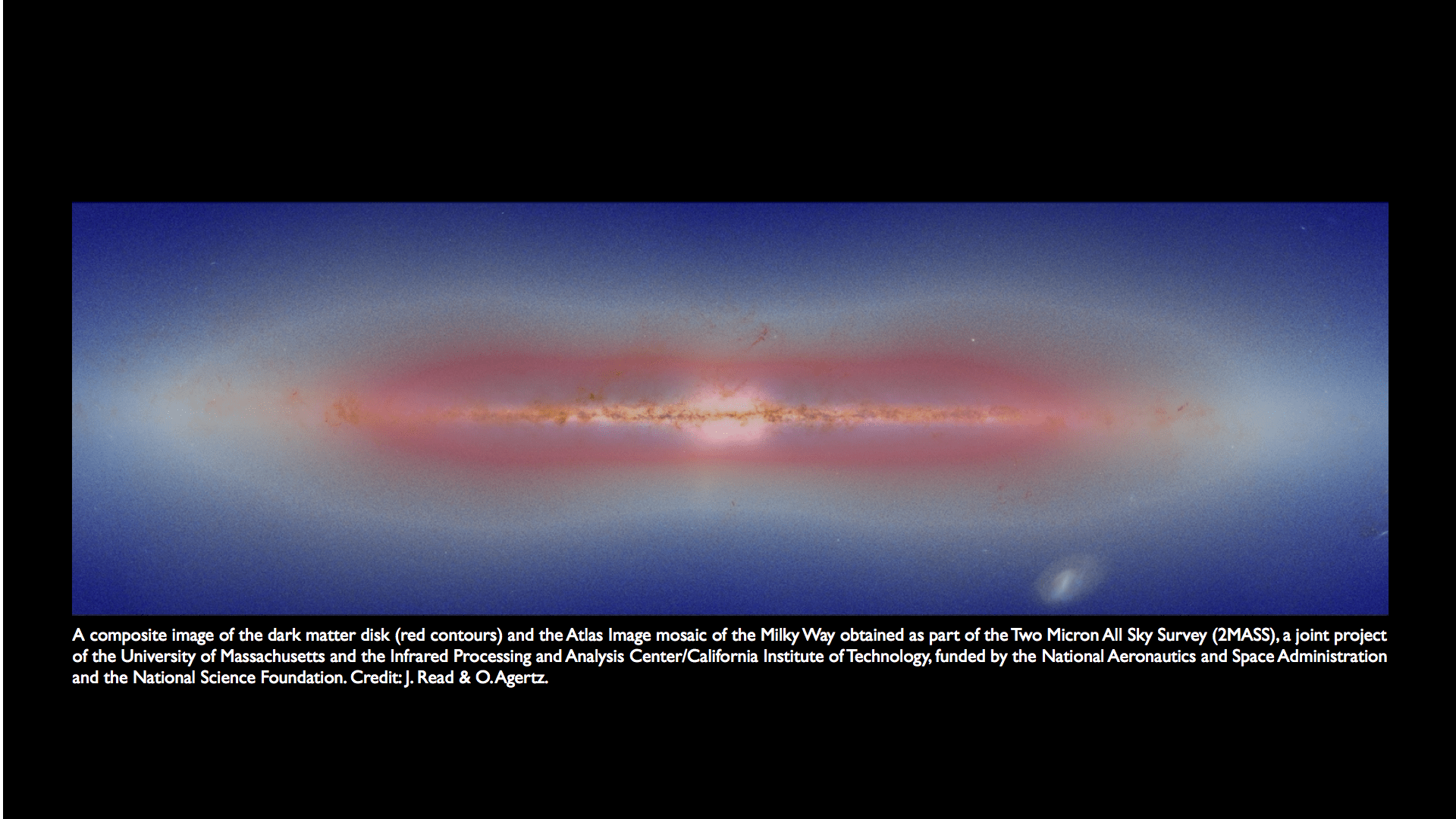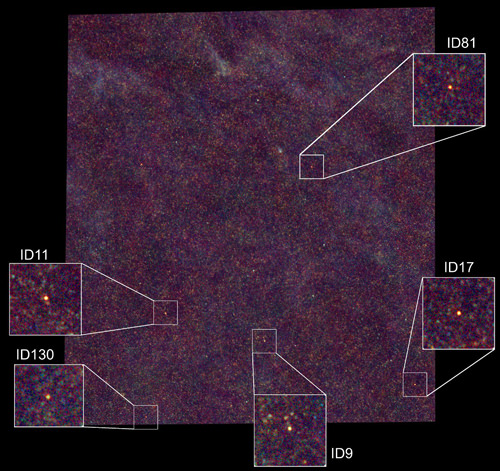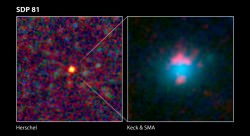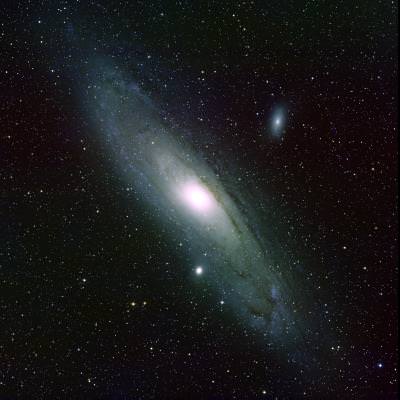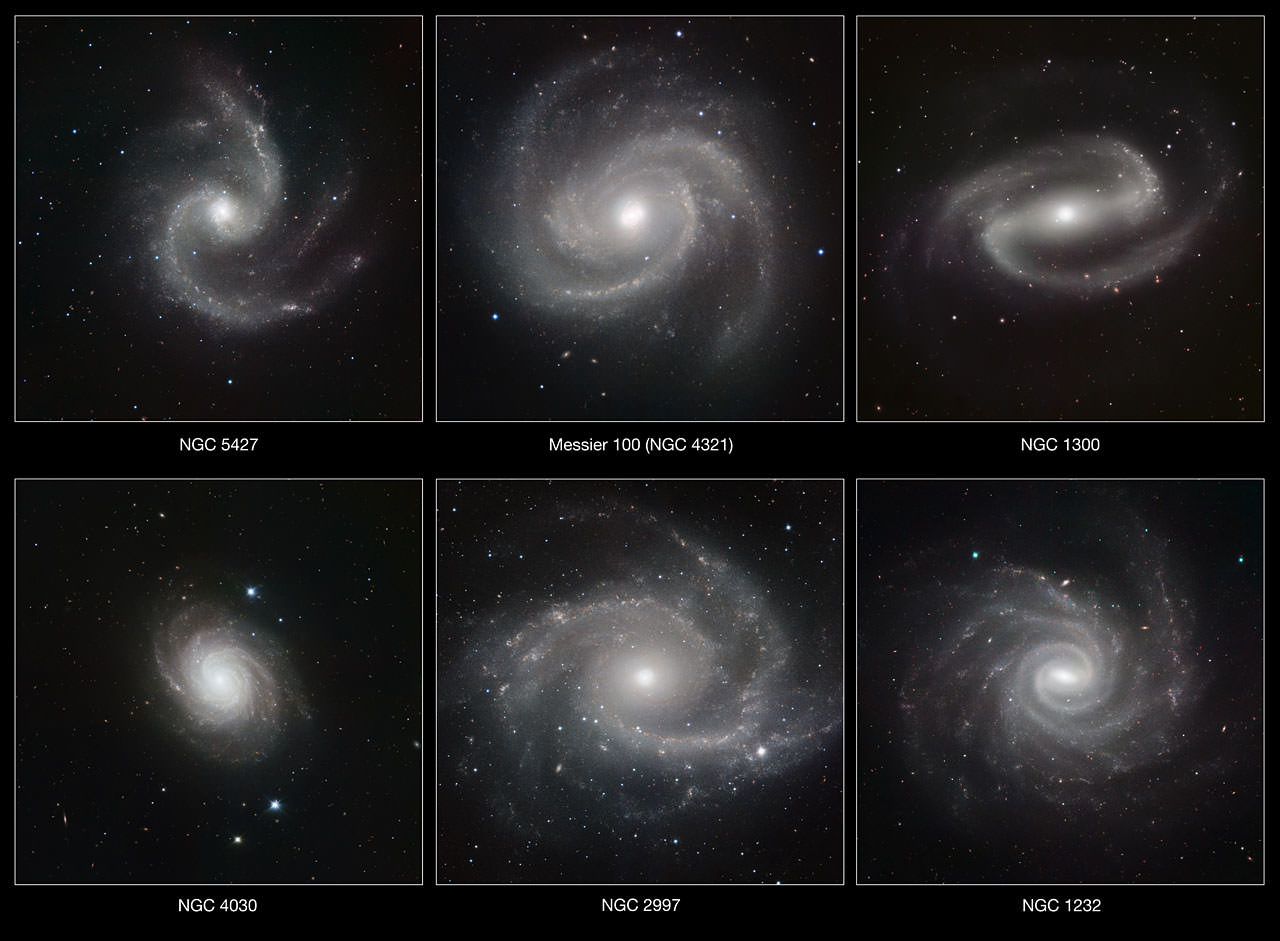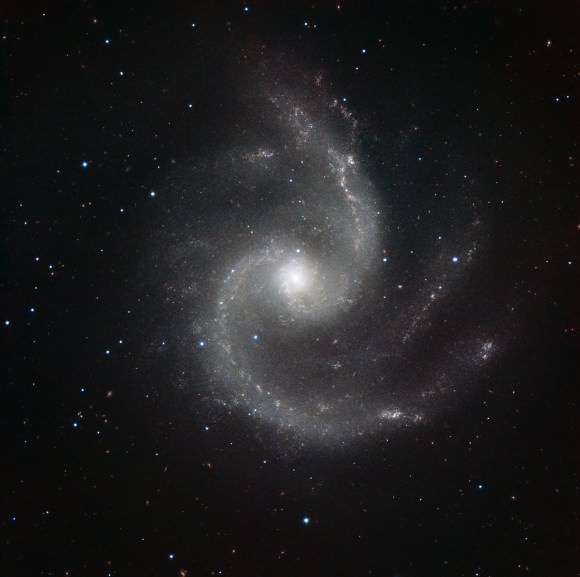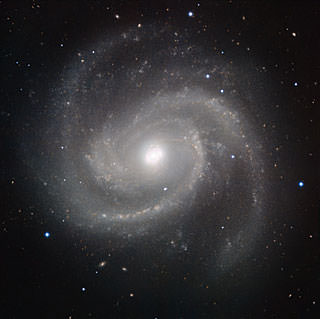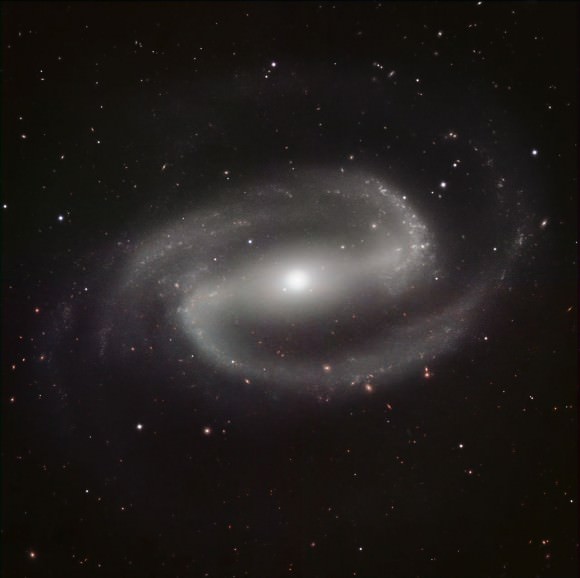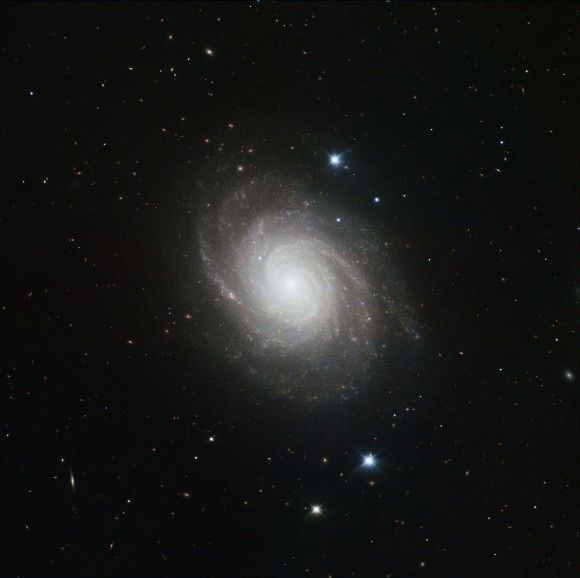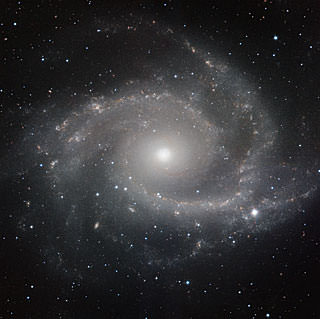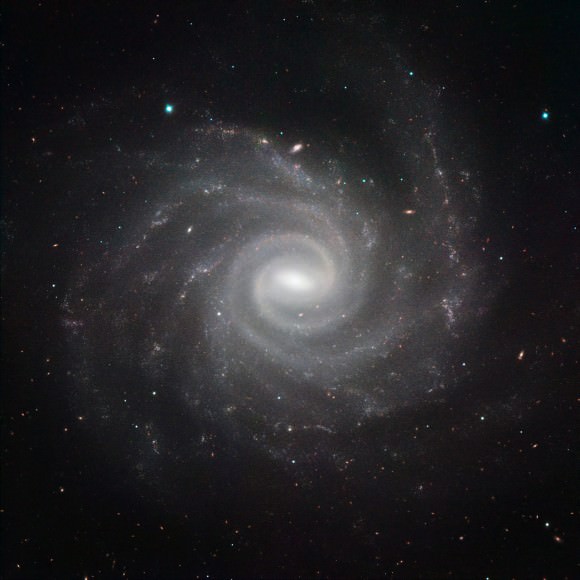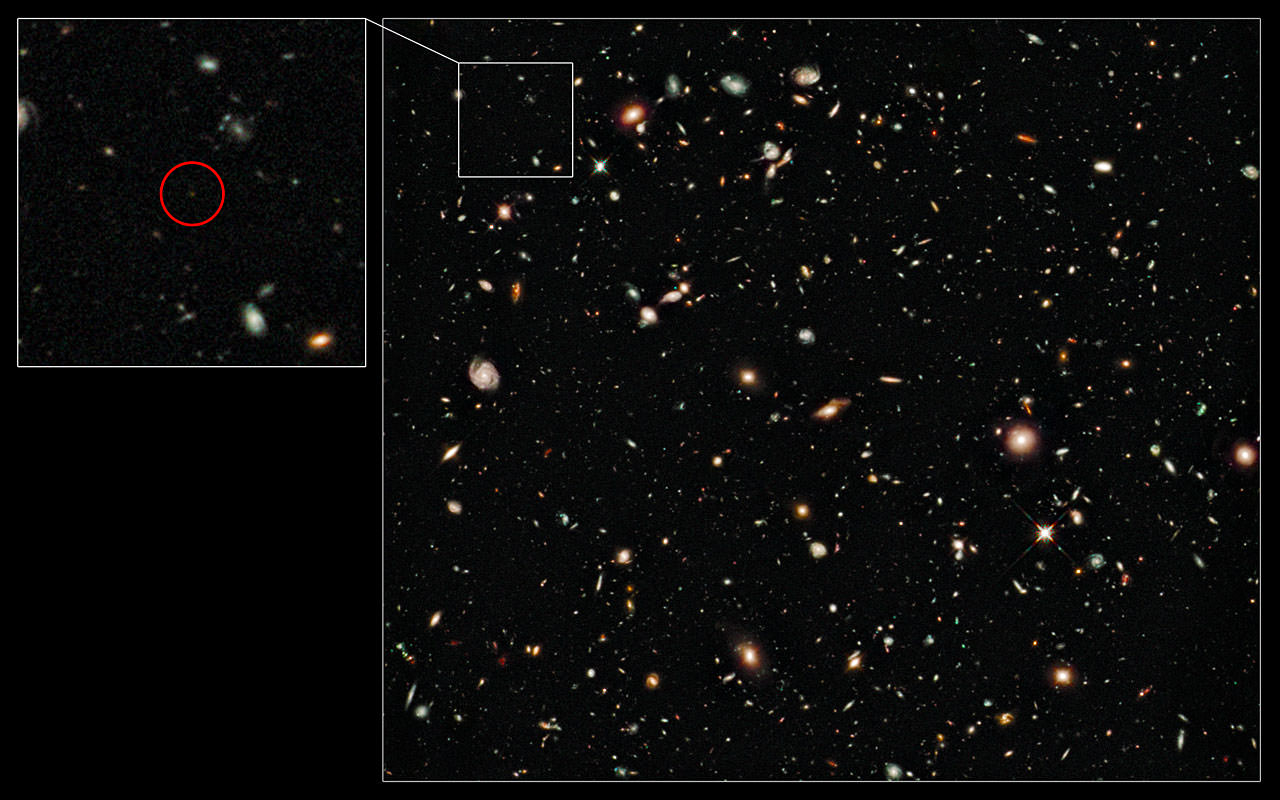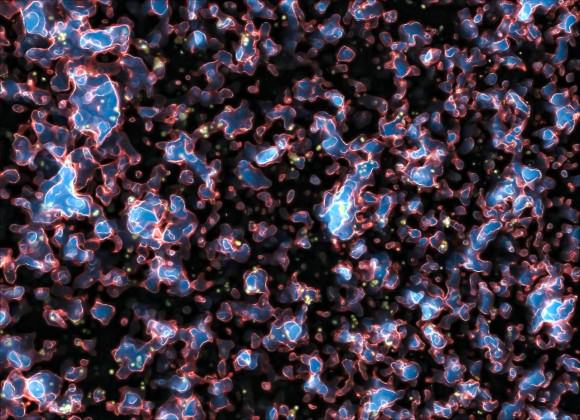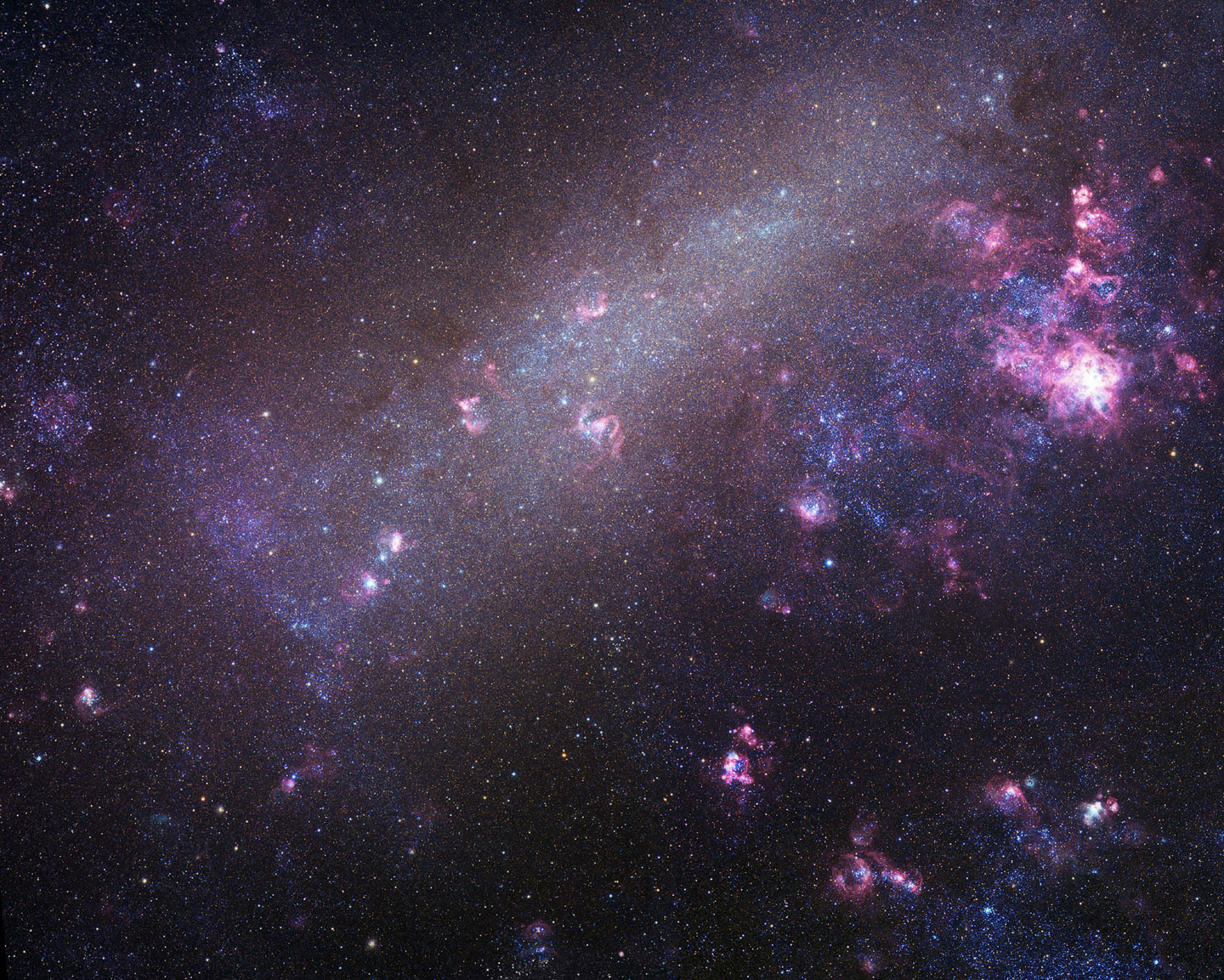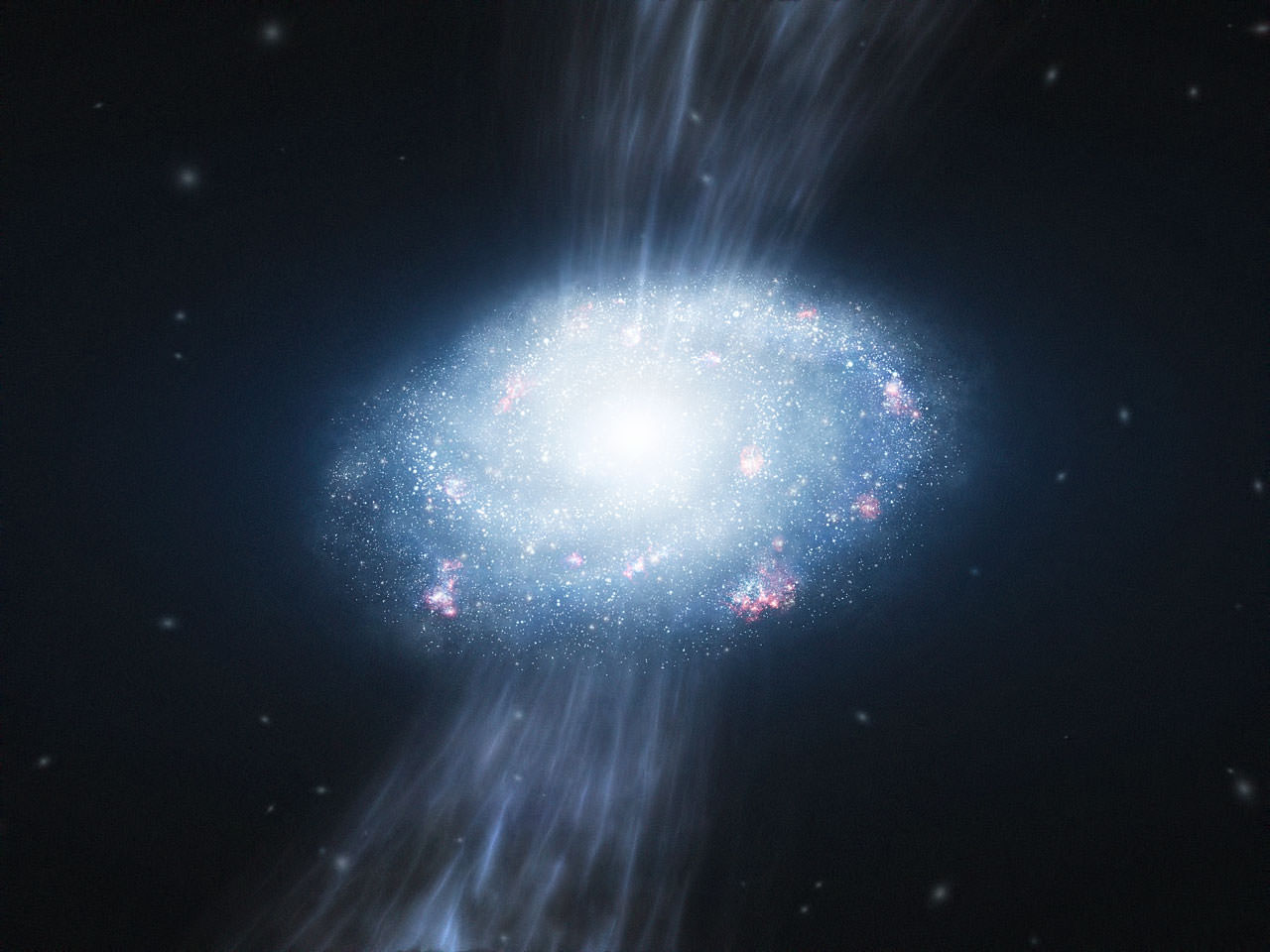[/caption]
Using Hubble’s Advanced Camera for Surveys, astronomers have been able to chart invisible dark matter in a distant galaxy, which enabled them to create one of the sharpest and most detailed maps of dark matter in the universe. Looking for invisible and indeterminate matter is a difficult job, but one that astronomers have been trying to do for over a decade. This new map also might provide clues on that other mysterious stuff in the universe — dark energy – and what role it played in the universe’s early formative years.
A team led by Dan Coe at JPL used Hubble to look at Abell 1689, located 2.2 billion light-years away. The cluster’s gravity, which mostly comes from dark matter, acts like a cosmic magnifying glass, bending and amplifying the light from distant galaxies behind it. This effect, called gravitational lensing, produces multiple, warped, and greatly magnified images of those galaxies, making the galaxies look distorted and fuzzy. By studying the distorted images, astronomers estimated the amount of dark matter within the cluster. If the cluster’s gravity only came from the visible galaxies, the lensing distortions would be much weaker.
What they found suggests that galaxy clusters may have formed earlier than expected, before the push of dark energy inhibited their growth.
Dark energy pushes galaxies apart from one another by stretching the space between them, thereby suppressing the formation of giant structures called galaxy clusters. One way astronomers can probe this primeval tug-of-war is through mapping the distribution of dark matter in clusters.
“The lensed images are like a big puzzle,” Coe said. “Here we have figured out, for the first time, a way to arrange the mass of Abell 1689 such that it lenses all of these background galaxies to their observed positions.” Coe used this information to produce a higher-resolution map of the cluster’s dark matter distribution than was possible before.
Based on their higher-resolution mass map, Coe and his collaborators confirm previous results showing that the core of Abell 1689 is much denser in dark matter than expected for a cluster of its size, based on computer simulations of structure growth. Abell 1689 joins a handful of other well-studied clusters found to have similarly dense cores. The finding is surprising, because the push of dark energy early in the universe’s history would have stunted the growth of all galaxy clusters.
“Galaxy clusters, therefore, would had to have started forming billions of years earlier in order to build up to the numbers we see today,” Coe said. “At earlier times, the universe was smaller and more densely packed with dark matter. Abell 1689 appears to have been well fed at birth by the dense matter surrounding it in the early universe. The cluster has carried this bulk with it through its adult life to appear as we observe it today.”
Astronomers are planning to study more clusters to confirm the possible influence of dark energy. A major Hubble program that will analyze dark matter in gigantic galaxy clusters is the Cluster Lensing and Supernova survey with Hubble (CLASH). In this survey, the telescope will study 25 clusters for a total of one month over the next three years. The CLASH clusters were selected because of their strong X-ray emission, indicating they contain large quantities of hot gas. This abundance means the clusters are extremely massive. By observing these clusters, astronomers will map the dark matter distributions and look for more conclusive evidence of early cluster formation, and possibly early dark energy.

